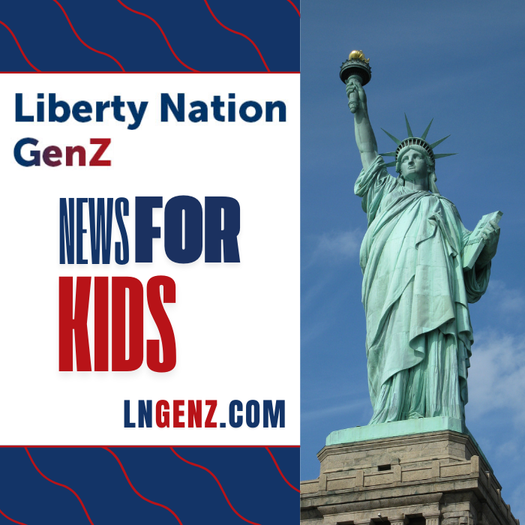Could stability be returning to global financial markets? It was a quiet week on Wall Street as investors combed through the latest trade developments and concluded the frenzy caused by tariffs could fade to black. The US-UK trade agreement was ostensibly a blueprint for future deals with major US trading partners, striking a goldilocks zone that would not upend worldwide commerce. But can the current administration accomplish a new arrangement with the Chinese regime? It will be quite the mountain for both sides to climb.
Big Tariffs in Little China
President Donald Trump has imposed a 145% tariff rate on Chinese goods entering the United States. Likewise, as part of retaliatory efforts, Beijing implemented a tit-for-tat 125% levy on American-made products shipped to the world’s second-largest economy. Treasury Secretary Scott Bessent has previously compared this to an embargo, and industry data suggest that US-China trade activity is frozen. Can Bessent defrost chilly relations?
Bessent and Trade Representative Jamieson Greer will be in Switzerland this weekend, talking with Chinese Vice Premier He Lifeng, who also handles economic matters in Beijing. The face-to-face meeting will unlikely garner a massive trade deal, and Bessent has viewed the occasion as a way to “de-escalate before we can move forward.” Greer, meanwhile, wants the meeting to create “stability” and establish a “foundation for something more.”
Put simply, the objective behind negotiating with China is to create a climate of fair trade.
Before US-China talks got underway, the president took to social media and proposed lowering the tariff rate to 80%. In a Truth Social post, he also encouraged the Chinese Communist Party to “open up its market” to the United States because “closed markets don’t work anymore!” Conversely, Beijing asked the White House to eliminate tariffs before the Geneva meeting.
The new trade pact with the United Kingdom will likely be a blueprint for the administration to use with other nations. However, because China is the big kahuna in international commerce, the conclusion might be different. And this is what concerns Wall Street.
“Progress this week was encouraging, but we remain in the ebbs and flows of the news cycle, which is causing market reactions. We are likely in a sideways period of volatility until we begin to get tangible (calculable) outcomes,” said Mark Hackett, chief market strategist at Nationwide Investment Management Group, in an interview with CNBC.
Though Beijing is acting tough, Trump’s tariffs are beginning to take a toll on its economy. Factory activity has suffered a sharp slowdown; foreign direct investment has plunged; the market is flirting with deflation, and exports to the world’s largest economy have tumbled. Trump may have been right last month when he said China needed the United States more than America needed Beijing. “The ball is in China’s court. China needs to make a deal with us. We don’t have to make a deal with them,” said Karoline Leavitt, White House press secretary, reading from Trump’s prepared statement during a press briefing.
Canada Suffers
Last month, the Canadian economy did not have good news. According to the Labor Force Survey by Statistics Canada, the first report under Prime Minister Mark Carney, the Great White North’s unemployment rate surged to 6.9% in April from 6.7% in March. While employment rose by 7,400, it was an artificial increase related to election-related hiring. In fact, the national manufacturing sector lost more than 30,000 manufacturing jobs.
The cause? Trump’s tariffs. “It doesn’t take an archeological dig to realize this is a weak report,” Bank of Montreal Chief Economist Douglas Porter wrote in a client note. “This is the first major data reading for April, and it shows that tariffs are already taking a material bite out of the economy.”
Economic observers agree that Canada will likely slip into a recession in 2025, and the jobless rate will climb well above 7% by the year’s end. This could force the Bank of Canada to pull the trigger on another quarter-point interest rate cut.
Germany Wants Zero-for-Zero
This week, newly elected German Chancellor Friedrich Merz spoke with President Trump by phone. At a press conference in Brussels, Merz said he proposed a zero-for-zero tariff strategy to avert a widening trade dispute.

“I told him that, in my view, escalating this customs dispute is not a good idea. The best solution would be ‘down to zero’ for everything and for everyone,” he stated at a May 9 press conference. “At least in the short term, I hope we can make steps on lowering the existing tariffs. And in the long term also on a trade deal.”
Averting an intensifying trade spat would be in Germany’s best interest, as its economy has been narrowly avoiding a recession for the last two years. In the first quarter, the GDP growth rate was 0.2%, up from the fourth quarter’s 0.2% contraction.
Advantage: Trump
Considering the economic health of America’s trading partners, Trump has the advantage. Yes, tariffs hurt US businesses and consumers because importers pay the levies. At the same time, because the president is overhauling decades-old trade policy, the demand structure will inevitably change, for better or worse. The objective of rebalancing the global economy will hurt exporting markets, like Germany and Canada. The longer these trade battles and negotiations continue, the more difficult it will be for the struggling markets.
















